The historic sucking up of water from rivers and lakes and depositing this water into slurry tanks for agitation has left a residue of sand and grit at the bottom of many tanks, which has been combined with thicker, undiluted dung and other foreign objects to form a layer of material immovable by an agitator or slurry tank. This proves an issue for a number of reasons; firstly, it is reducing the storage space within the tank, while secondly it also makes carrying out works on a tank, such as extending or retrofitting an aeration system, impossible without thorough cleaning.
The historic sucking up of water from rivers and lakes and depositing this water into slurry tanks for agitation has left a residue of sand and grit at the bottom of many tanks, which has been combined with thicker, undiluted dung and other foreign objects to form a layer of material immovable by an agitator or slurry tank.
This proves an issue for a number of reasons; firstly, it is reducing the storage space within the tank, while secondly it also makes carrying out works on a tank, such as extending or retrofitting an aeration system, impossible without thorough cleaning.
Such a problem arose on the farm of John and Amanda Mooney, who are farming a black-and-white herd of dairy cows high up in Ashford, Co Wicklow, operating as Reynoldstown Farm.
With an aeration system fitted in an existing tank and to be installed in a new tank, the family wished to eliminate the need for agitation and retrofit an aeration system in their cubicle shed tank.
The problem they faced was a residue of close to 1ft of thick, immovable material at the bottom of the tank.
Having talked about lifting slats and lowering a skid steer in to place, the family mentioned the idea to neighbour Matt Ryan, who came up with an alternative solution.
Matt farms a tillage and beef farm close by, with winter barley, maize and grass grown on his 110 acres, with over 200 head of Wagyu cattle taken in on a B&B basis each winter.
Aside from farming interests, Matt is a successful businessman, with one of the businesses in his portfolio being Tank Environmental.
Tank Environmental has been in existence for over a decade, servicing both domestic and commercial customers with tank and drain services, from repairs and maintenance to cleaning. Matt explained: “We deal a lot with commercial customers cleaning storage vats; from chocolate factories to mozzarella plants to grease traps and heavy oil waste.
“When the Mooneys told me about their difficulties and lowering a skid steer down into the tank, I said: “But sure this is what we do each day, cleaning tanks.’’
Matt and Tank Environmental allowed the Irish Farmers Journal to accompany them as they tackled the slatted tank.
In pictures:
step by stepPicture one
Here, we can see the large amount of residue left in the tank. Channels were dug by hand around the edges to allow the water to drain away, which was sucked out by the farm’s NC 2,500-gallon tanker.
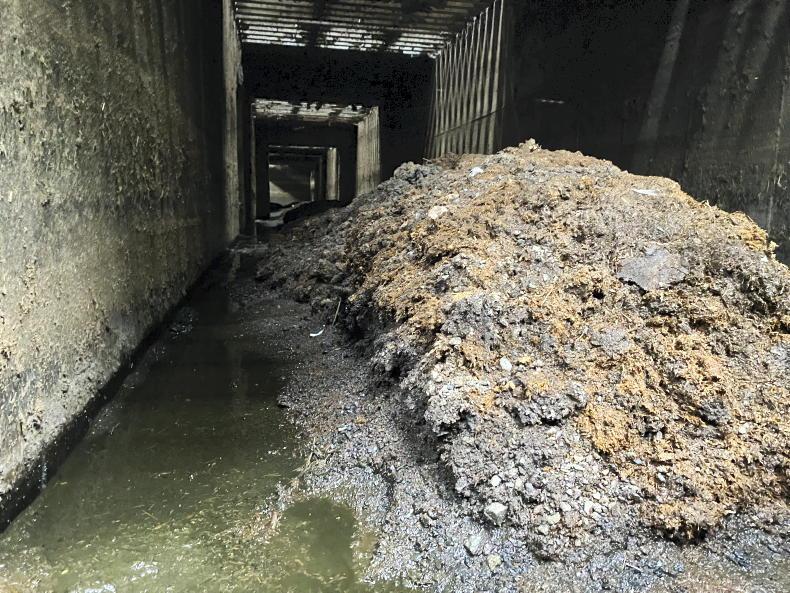
Picture one: tank residue before cleaning commenced.
The double tank with a spine wall through the middle, with two rows of 8ft slats sitting on it, holds approximately 96,000 gallons of slurry, and was last cleaned out 18 years ago with a skid steer.
Much of the residue in situ is thick, dried out dung, while a good portion also consisted of grit and sand, brought in through cow’s feet and water for agitation.
Picture two
A torpedo head is fitted to high pressure hose, which effectively cuts through and breaks up the solid lumps to a certain degree, with the main aim of the torpedo head being to break the crust from the surface of the lumps and release any toxic gases before the ground team enter the tank.
The torpedo head is capable of pumping 135 gallons/min at 2,800 PSI, which slices through the residue with ease.

Picture two: the torpedo head which cuts through the solid lumps with 135 gallons/min passing through it.
On the day, some of the grit was so solidified that the torpedo head was sliding over the lumps, but this was easily rectified by cutting an entry channel into the front of the lump which directed the torpedo head underneath.
At all times, safety is of paramount concern. All the team are kitted out with PPE, with harnesses attached to a pulley to aid pulling a team member out of a tank, if necessary. Team members also wear gas monitors at all times to measure levels of oxygen and hydrogen sulfide.
Picture three
The loosened material is then sucked through a pipe, driven by one of the two trucks that the crew has. At 55,000 litres/minute, it has five times more suction than a standard slurry vacuum tanker.
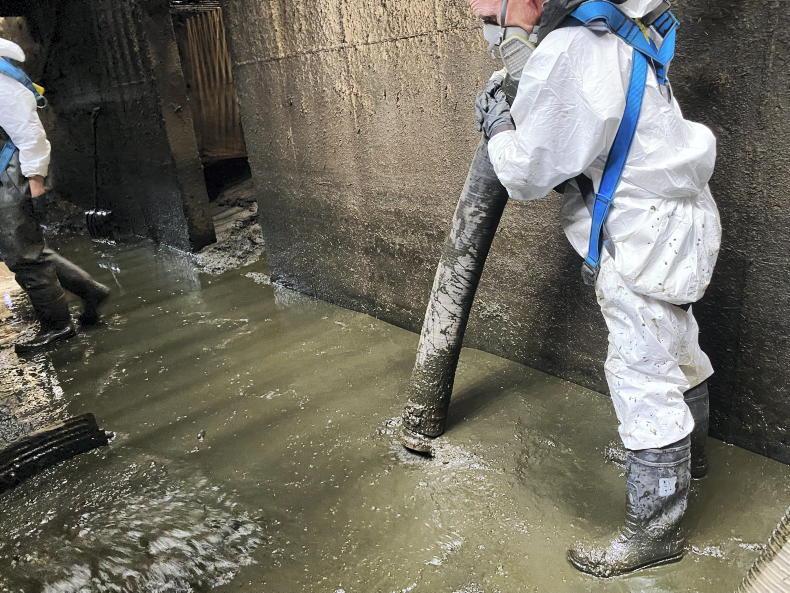
Picture three: loosened residue is then sucked through either a three-inch or six-inch pipe, with the pump having a capacity of 55,000 litres/minute.
The team shovels and scrapes the loosened material into the pipe, with both three-inch and six-inch pipes used, depending on the level of suction required and material size.
Picture four
Material not broken down by the torpedo head is then further broken down using the 136-gallon/min hose and pump.
The truck with the water on board holds 500 gallons, with this being filled up using either fire hydrants or pumped from the slurry tanker on farm in to a hatch at the side.
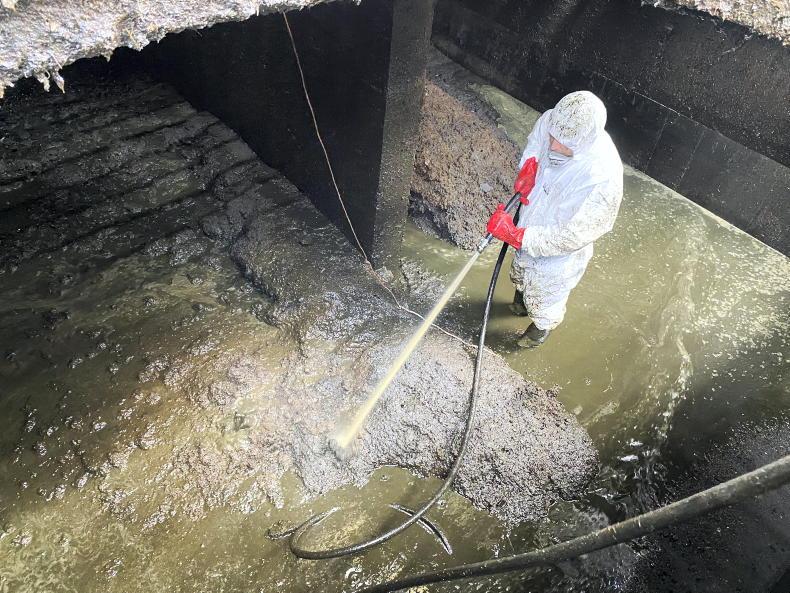
Picture four: Material not broken down by the torpedo head is further diluted with 136 gallons/min at 2,800 PSI to allow it to be suctioned.
“We can normally recycle water through our filtration system, but the material here is so coarse we are having to use clean water,’’ explained Matt.
While one truck pumps water to break down the material, the second truck is suctioning more of this material, directed towards the pipe by the team using shovels and scrapers.
Picture five
After all the heavy material is removed, the tank receives a final washdown and scrape to leave a perfectly clean surface. Matt estimates that approximately 10% of the tank capacity was lost due to the residue sitting at the bottom.
“I don’t know how else you could tackle it, to be honest. The tanks here are only 8ft wide, so you couldn’t even turn a skid steer inside them, and then you would have to try to shovel it out with a digger, or the likes.
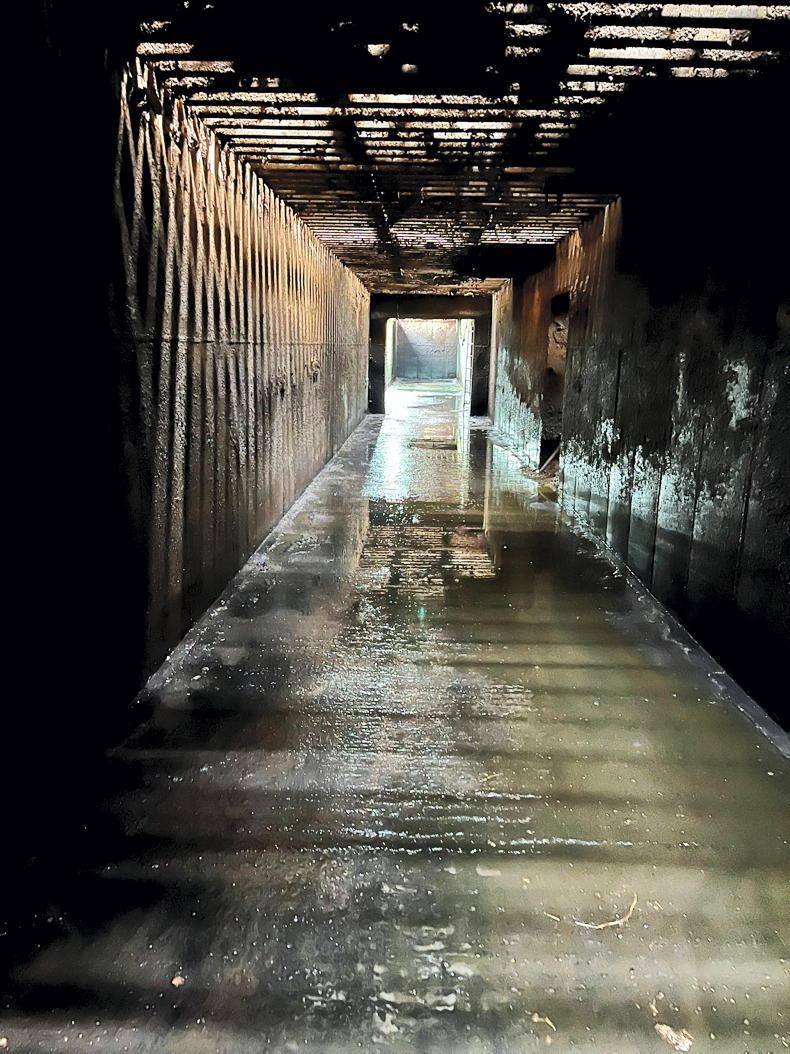
Picture five: the finished product, with the tank spotlessly clean after the team.
“Besides this, it’s too dangerous a task for farmers, as we all know too many incidents happen with deadly gases in slurry tanks. Our team have the monitors in place at all times and are all trained for working in confined spaces.”

Some of the residue removed from the tank.
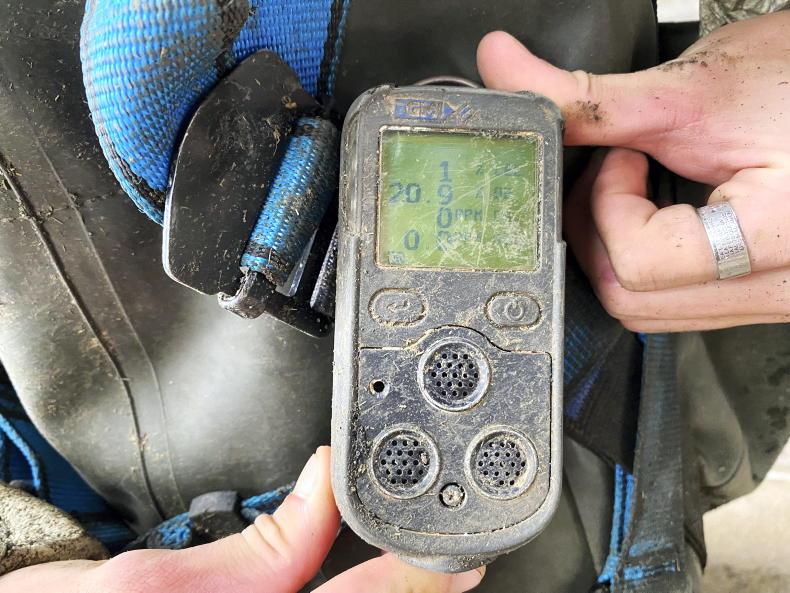
Monitors are worn by all staff entering a tank which measure oxygen, hydrogen sulfide and C02 levels.
The team completed one side of the tank in the day, with some teething issues causing a delay, eg two burst hoses due to recycling dirty water, lack of clean water on farm, but with this being their first slurry tank, they have learned about how best to tackle residue and Matt is confident that the team could tackle a tank of this size and be in and out in one day.
The two trucks and six ground team will set a farmer back by €3,500 for the day, but if machine hire and the labour, time and danger associated with tackling the job yourself are taken into consideration, then it will be money well spent for many.
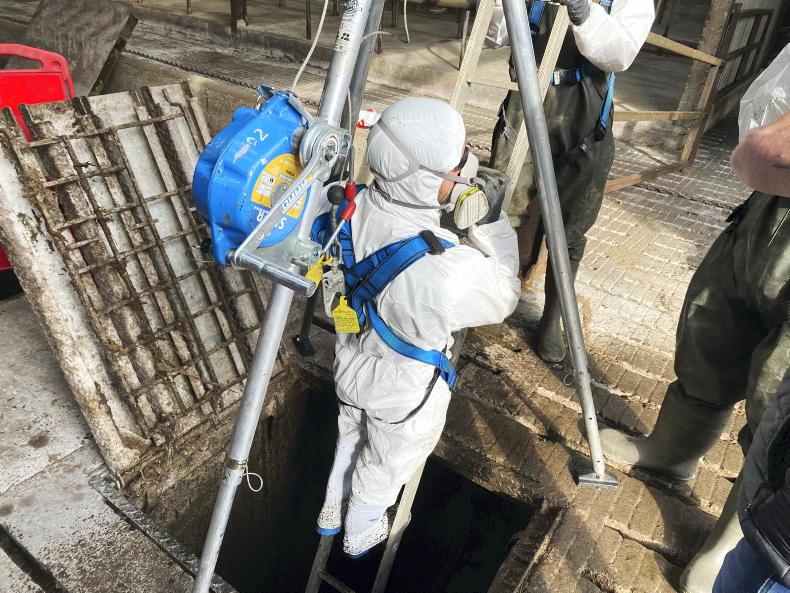
Safety is paramount. All staff wear PPE, with gas monitors and safety harnesses also worn.
Tank residues cause a loss of storage and must be removed for extending tanks or retrofitting aeration systems.Tank Environmental offer a specialised service to farmers in lieu of lifting slats and removing residue with skid steers/loaders/diggers.A team of six ground crew and two lorries will cost in the region of €3,500, with work competed dependent on volume and consistency of residue. 



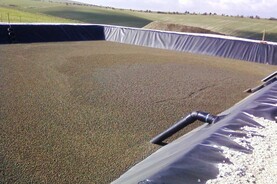
SHARING OPTIONS: